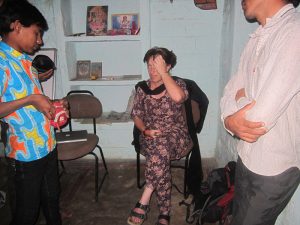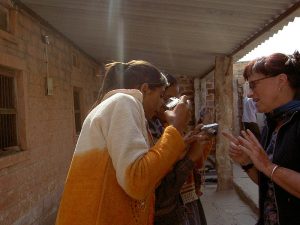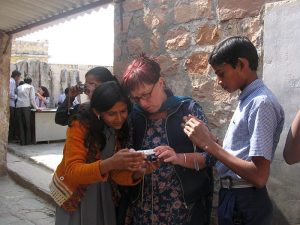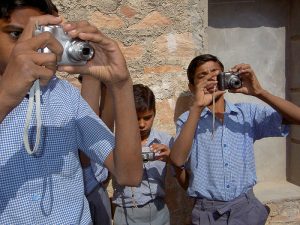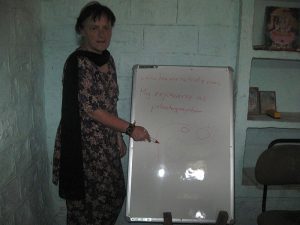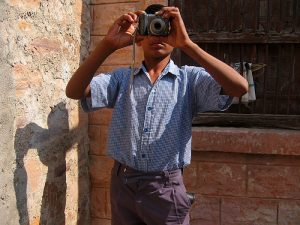HOW: 2012 IN CHANDELAO
As I started spending my winters in Rajasthan, enjoying especially the village-life and studying the publications about Rajasthan – I thought it an interessting idea to produce a book about the village-life in a special way. I wanted to concentrate the book on one village as an example for many villages and to look a littler closer at the life and the villagers. With the methods of the kamerakidz – having the children taking the photos and getting the text together with them, I was hoping for a book which would be interessting for visitors as well is other people getting better knowledge about a place quite different from their own. Together with the book I was thinking of by-products as calenders, postcards and exhibitions for income and advertising of the place, too.
But as I had visited some villages in Rajasthan, I knew that the first challenge was to find a school where the children could speak some english. The school-situation in rural Rajasthan is – compared to other places – a “catastrophe”: there are buildings and paid teachers, but usually these teachers aren’t interessted and don’t attend the school or have a bad education themselves without a knowledge of the english language and also children don’t always go regularly. In comparison to Ladakh/Zanskar, there are no foundations from other countries, who feel pity and support a private school. To cut the story short: I didn’t find any school. I nearly gave up. Until my friends told my about a private school in the small village of Chandelao, just financed by school-fees with dedicated teachers. So I talked with Praduman Singh, the Thakur and owner of Chandelao-Garh, the heritage-hotel in the village. He was supporting the idea, invited me to stay there and sell the products via the NGO Sunder Rang.
After arriving in the Prince Bal Upper Primary School, I realised, that my friends were a little too enthusiastic about the english language skills. The teachers could talk a little, the children nearly nothing. But I had to take the challenge. As I had 10 donated cameras from Germany and class 8 had 10 students, we thought it best to do a photoclass with them. For not disturbing the regular lessons too much, I came each day at 2 pm, spent 1 hour with the children until school finished, handed them the cameras and came back in the morning to collect them to download the photos and recharge the batteries. At 2 pm we looked at some results, I tried to explain them a little bit and gave them orders and advise for their next period with the camera.
I think the best idea I had was to show them first the photos of the Zanskarkidz as from Day 1 I got the photos I was hoping for: their daily life with their friends, family, animals. The quality was same as with the Zanskarkidz surprisingly good – they were even better especially with the portraits. The teaching didn’t take a huge part due to language problems – although it leaded sometimes to funny situations when I tried to pantomime what I wanted to explain. Also the children had to find a way how to communicate with me and I guess for their first time they really understood, how important it might be to know how to communicate in this language they were supposed to learn but never had a use of in their daily life.
So the photography itself wasn’t a big deal – they clicked many great photos, I encouraged them a lot, praised their skills, elected daily a photo of the day and had them later do that themselves. They beamed with enthusiasm, savoured the time they were admired by the younger ones and respected from the village-people and could get surprise looks from the tourists. The difficulty was the text for the book-to-be. I didn’t find a solution yet – maybe I’ll return with a translater (in the whole village there was no person, who could talk a good english except the Thakur, who didn’t have time as he was engaged with the hotel-guests).

